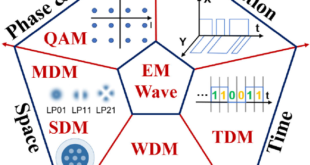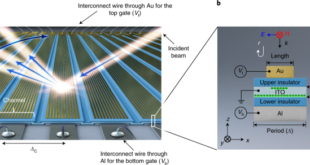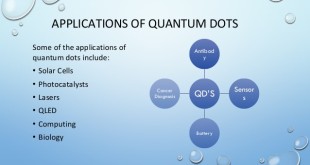An optical network is a communication system that uses light signals, instead of electronic ones, to send information between two or more points. The points could be computers in an office, large urban centers or even nations in the global telecommunications system. These include limited range local-area networks (LAN) or wide-area …
Read More »DARPA P-IR developing very small, persistent infrared radiation (IR) sensors of personnel
Infrared radiation detectors are a critical component for DoD imaging systems used in areas such as military vehicles, military night vision, military communication, environmental monitoring, and target acquisition. In addition, they are crucial for commercial markets including surveillance, digital cameras, automotive and scientific research. Common constraints for IR sensors …
Read More »DARPA OpTIm developing room-temperature Quantum-Level Infrared Detectors
Electromagnetic energy, produced by the vibration of charged particles, travels in the form of waves through the atmosphere and the vacuum of space. These waves have different wavelengths (the distance from wave crest to wave crest) and frequencies, These two are inversely related to each other, the shorter the wavelength, …
Read More »High-Baud-Rate Coherent Optical Communication Systems
The explosive growth of optical communication technology in the past decades has revolutionized the telecom industry and created a global communication infrastructure with optical networks. Optical communication links and networks are essential for the Internet backbone as well as for interconnects used in data centres and high-performance computing systems. The increasing …
Read More »Spatial Light Modulator (SLM) for beam steering, optical communications, advanced microscopy and biomedical imaging
A spatial light modulator (SLM) is a special device that can manipulate light by modulating the amplitude, phase or polarization of the light waves in the two dimensions of space and time. This means that light is manipulated in order to obtain a desired output, and SLM is commonly used …
Read More »Military Photonics
Photonics is the science of controlling the flow of light. The characteristics of the waves of light or individual photons that make up light can be used to explore the universe, cure diseases, and even solve crimes. It is a branch of optics that deals with the generation, transmission, modulation, …
Read More »Optical storage disc as Data storage technology is making combeback
There were 79 zettabytes of data generated worldwide in 2021. By 2025, more than 150 zettabytes of big data will need analysis. Dramatic increases in data storage capacities are urgently needed as they are being outpaced by exponential growth in data generation, driven by use of the internet, social media, …
Read More »Photonics Masts are critical subsystems of Submarine imaging, navigation, electronic warfare and communications system
A submarine is a naval platform that can stay underwater for an extended period to carry out missions, both offensive and defensive. It is a complex platform that includes multiple components. As radio waves cannot propagate in water, communication with submarines is difficult. To overcome this issue, submarines are being …
Read More »Facial recognition widely employed in commercial, Security and Military applications
Facial recognition is a way of using software to determine the similarity between two face images in order to evaluate a claim. The technology is used for a variety of purposes, from signing a user into their phone to searching for a particular person in a database of photos. …
Read More »Quantum dots, the semiconducting nanocrystals enable efficient & cheaper displays, solar cells, and infrared cameras
Driven by technology advances in solid-state optoelectronics, light-emitting diode (LED) lighting has been expanded to a wide range of applications in consumer electronics, automotive, architectural, and healthcare settings. Recently, there has been a drive to make lighting “smart” by incorporating internet of things (IoT) connectivity and machine learning-based artificial intelligence …
Read More » International Defense Security & Technology Your trusted Source for News, Research and Analysis
International Defense Security & Technology Your trusted Source for News, Research and Analysis




